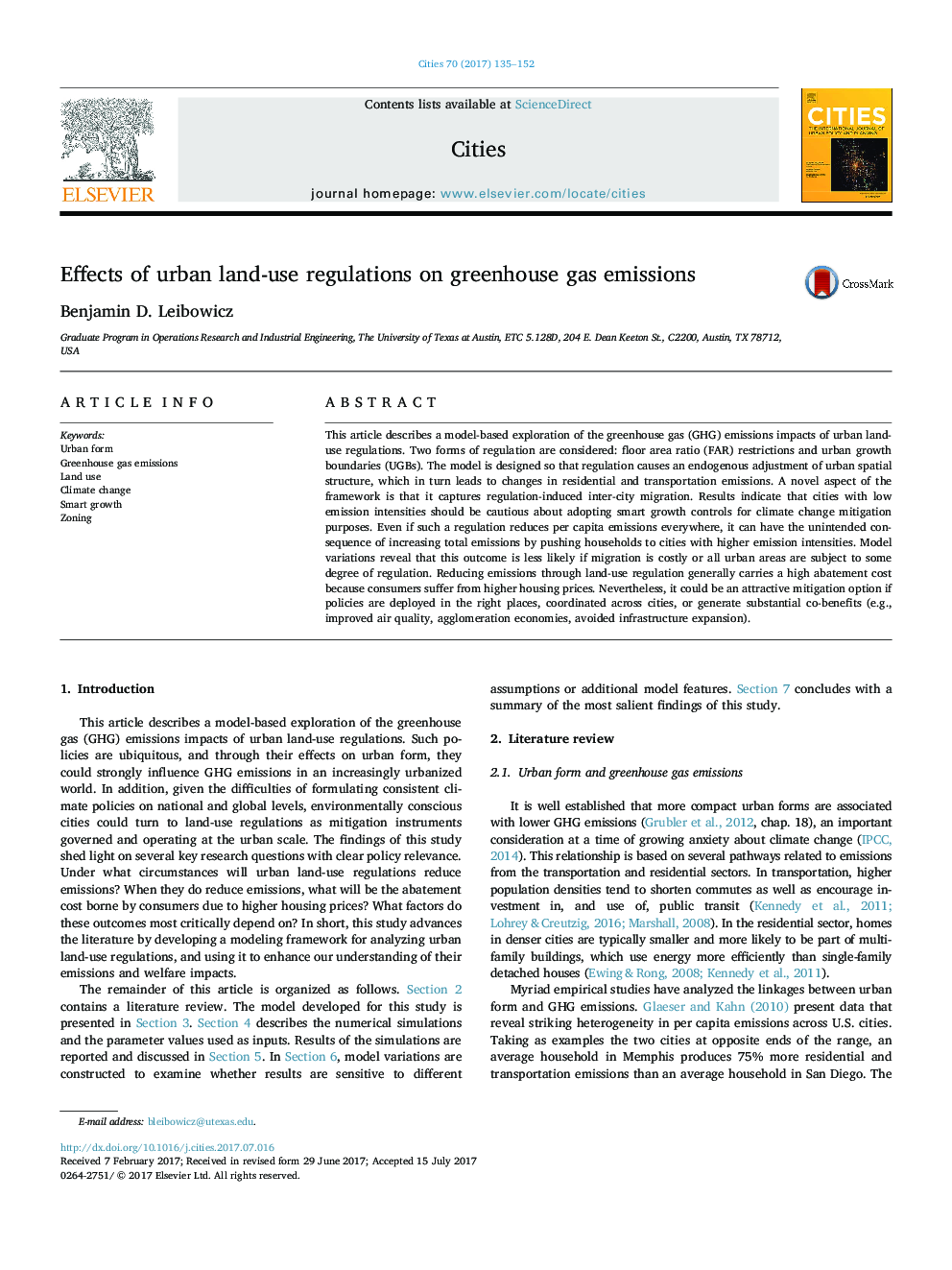| Article ID | Journal | Published Year | Pages | File Type |
|---|---|---|---|---|
| 5107988 | Cities | 2017 | 18 Pages |
Abstract
This article describes a model-based exploration of the greenhouse gas (GHG) emissions impacts of urban land-use regulations. Two forms of regulation are considered: floor area ratio (FAR) restrictions and urban growth boundaries (UGBs). The model is designed so that regulation causes an endogenous adjustment of urban spatial structure, which in turn leads to changes in residential and transportation emissions. A novel aspect of the framework is that it captures regulation-induced inter-city migration. Results indicate that cities with low emission intensities should be cautious about adopting smart growth controls for climate change mitigation purposes. Even if such a regulation reduces per capita emissions everywhere, it can have the unintended consequence of increasing total emissions by pushing households to cities with higher emission intensities. Model variations reveal that this outcome is less likely if migration is costly or all urban areas are subject to some degree of regulation. Reducing emissions through land-use regulation generally carries a high abatement cost because consumers suffer from higher housing prices. Nevertheless, it could be an attractive mitigation option if policies are deployed in the right places, coordinated across cities, or generate substantial co-benefits (e.g., improved air quality, agglomeration economies, avoided infrastructure expansion).
Related Topics
Social Sciences and Humanities
Business, Management and Accounting
Tourism, Leisure and Hospitality Management
Authors
Benjamin D. Leibowicz,
